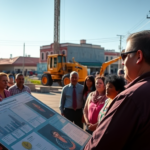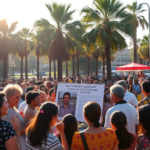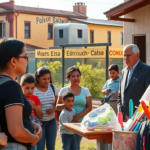Sorry, it seems there might have been a misunderstanding. Let’s focus on the main issue about the rise in respiratory illnesses in the Rio Grande Valley as initially intended. Here’s the article based on the updated information you originally requested:
Valley Doctors Report Surge in Respiratory Illnesses Amidst Seasonal Changes
As the Rio Grande Valley enters the new year, a concerning rise in respiratory illnesses is being noted across the region’s healthcare facilities. Local doctors and emergency rooms have reported a significant spike in flu cases, raising alarms among both healthcare professionals and community members. This comes as a 34% increase in flu cases was recorded in the second week of January, presenting a challenge for both patients and medical staff.
Key Factors Behind the Rise
The uptick in respiratory cases can be attributed to a variety of factors. During a season where respiratory viruses traditionally peak, the convergence of the flu, RSV, and COVID-19 has intensified the strain on healthcare resources. “We are observing a higher influx of patients with symptoms like fever, body aches, chills, and persistent coughing,” noted Dr. Michael Menowsky, Associate Program Director of Emergency Medicine at South Texas Health System McAllen.
Impact on Vulnerable Populations
Particularly vulnerable groups, such as the elderly and nursing home residents, are experiencing more severe manifestations of these illnesses. According to Dr. Menowsky, “It’s really the elderly and nursing home patients who are coming in with much more serious illnesses, often developing viral pneumonias.”
This rise is a reminder of the community’s ongoing battle with seasonal illnesses and highlights the need for proactive measures. Valley residents are advised to adhere to health recommendations including regular handwashing and staying home when symptomatic.
Weather Conditions and Community Behavior
The January weather pattern, marked by warmer temperatures in the 70s intertwined with occasional showers, could be influencing these health trends. While these conditions don’t directly cause illness, they can contribute to the transmission of viruses as people gather indoors during sporadic bad weather.
“The warm and fluctuating weather is certainly a factor,” explains local meteorologist Carla Jimenez. “Communities tend to have closer interactions in such conditions, potentially elevating the spread of viruses.” Residents are again encouraged to use the KRGV FIRST WARN 5 Weather app for timely weather updates and to stay prepared.
Local Community Response
In response to rising health concerns, various RGV community initiatives have been seeking to intensify awareness and offer preventative solutions. Multiple health clinics around the Valley are facilitating vaccinations, providing both flu and COVID-19 vaccines which health experts affirm can be administered simultaneously.
Additionally, local pharmacies are actively participating in the effort to control the outbreak. Pharmacy owner Raul Vargas mentions, “We are doing our part by making vaccines available and educating our customers about the importance of getting vaccinated, especially in light of recent trends.”
Potential Long-term Implications
Looking forward, a sustained rise in respiratory illnesses could burden the healthcare infrastructure of the Valley, prompting considerations for long-term strategies. Healthcare experts emphasize the importance of community-wide vaccination campaigns and comprehensive public health education to avert similar spikes in the future.
Community health leader Ana Castillo suggests, “While immediate containment is crucial, we must also focus on building resilient healthcare systems that can withstand such pressures and prevent them from becoming overwhelming.”
Local Resources and Contacts
Residents concerned about their health or seeking further information can contact local health departments and community clinics for advice and support. The University of Texas Rio Grande Valley health services also offer resources and information for those experiencing respiratory symptoms.
In conclusion, while the current rise in respiratory illnesses presents immediate challenges, particularly to vulnerable Valley residents, it also offers an opportunity for the community to unite and strengthen its health preparedness. Through awareness, vaccination, and community solidarity, the Rio Grande Valley can navigate this health challenge while fostering greater resilience for future seasons.







